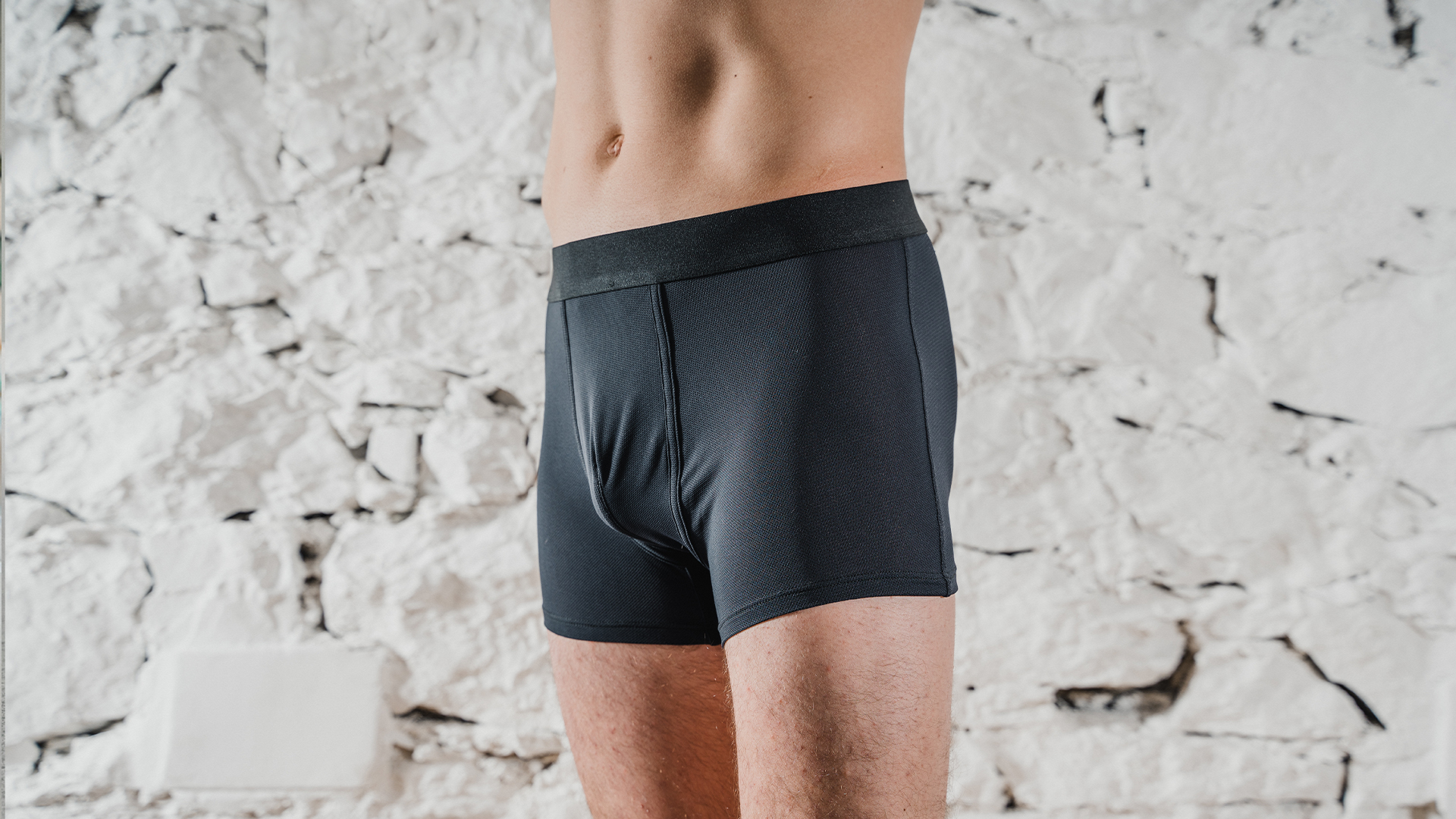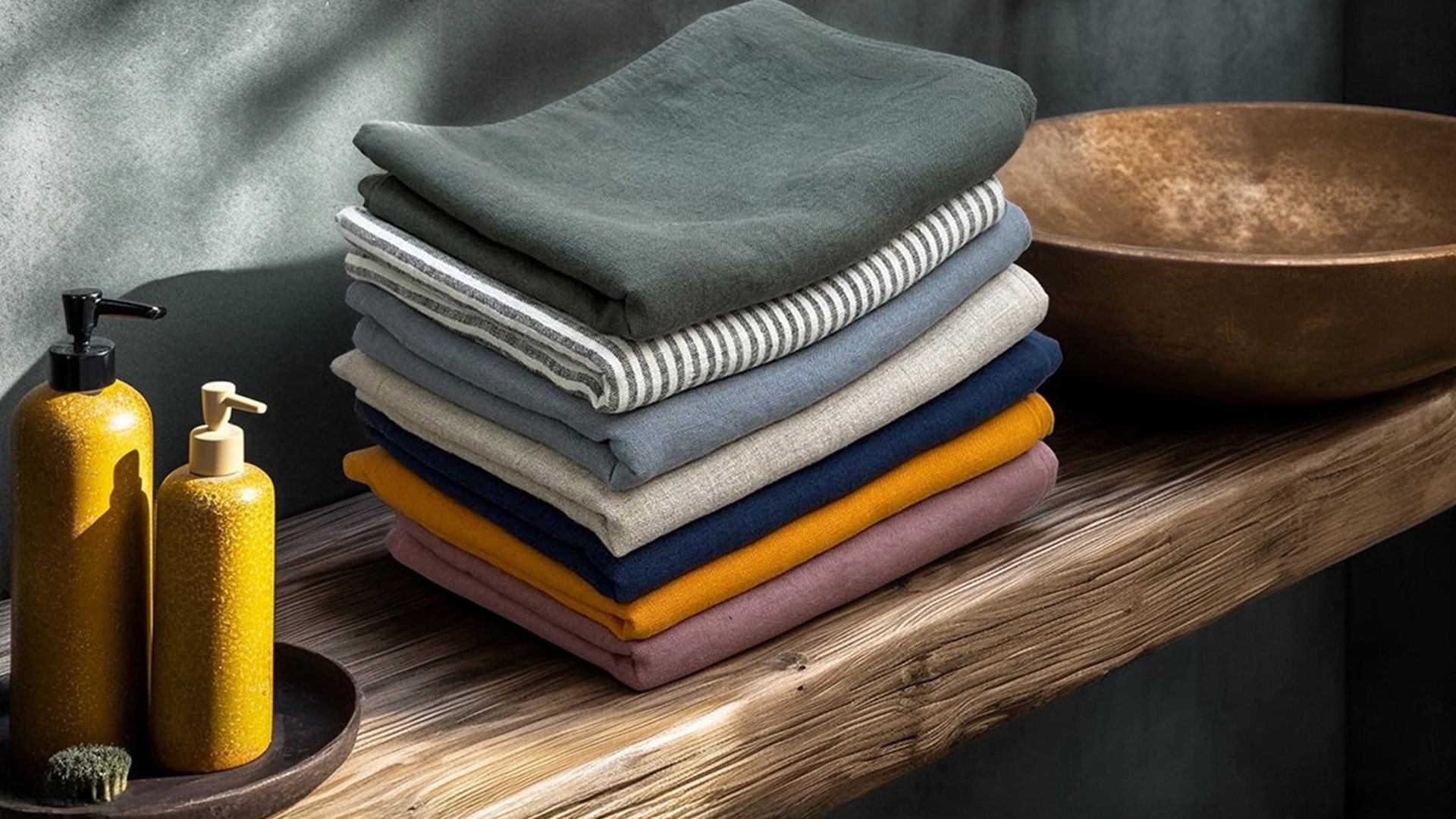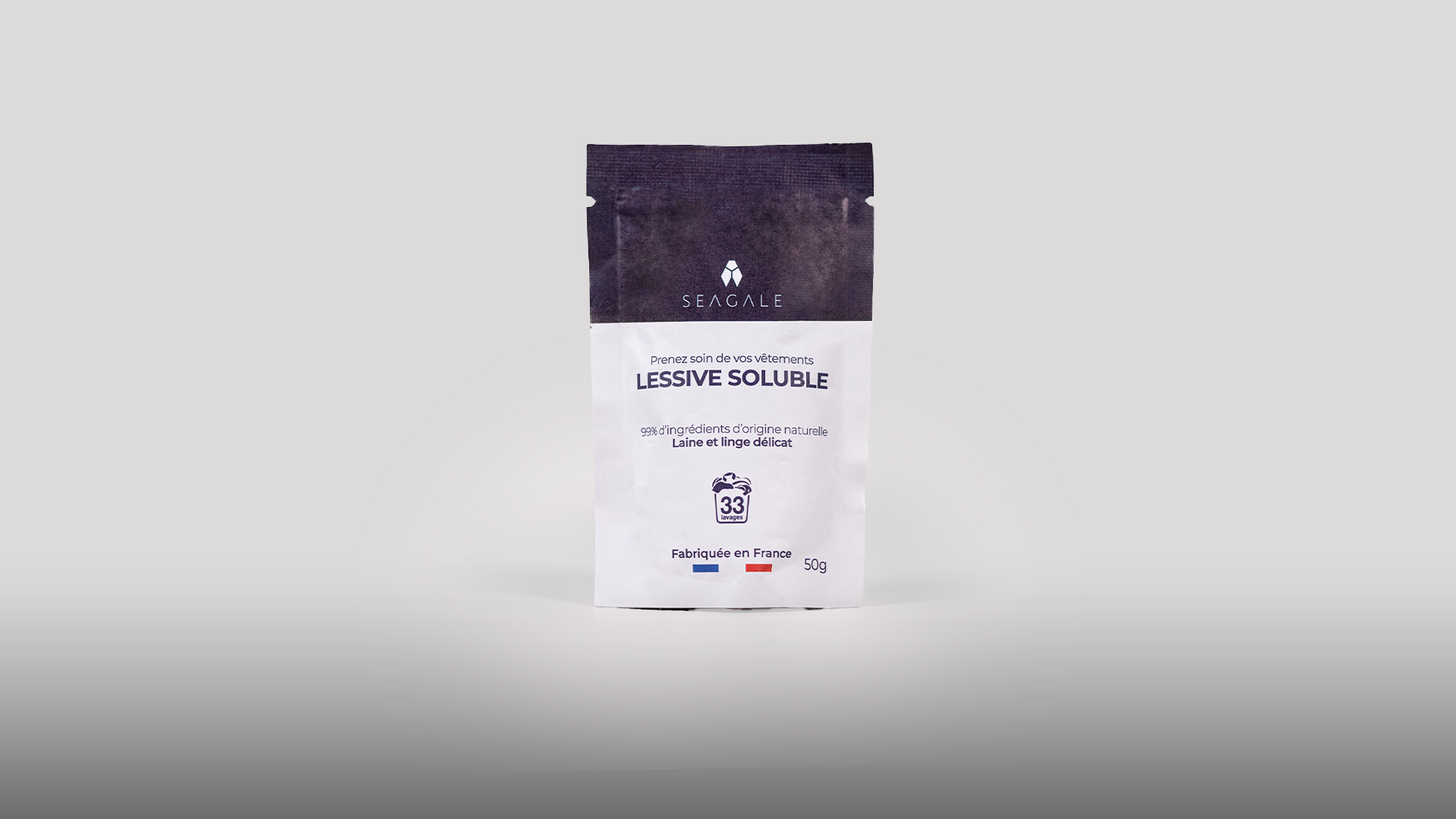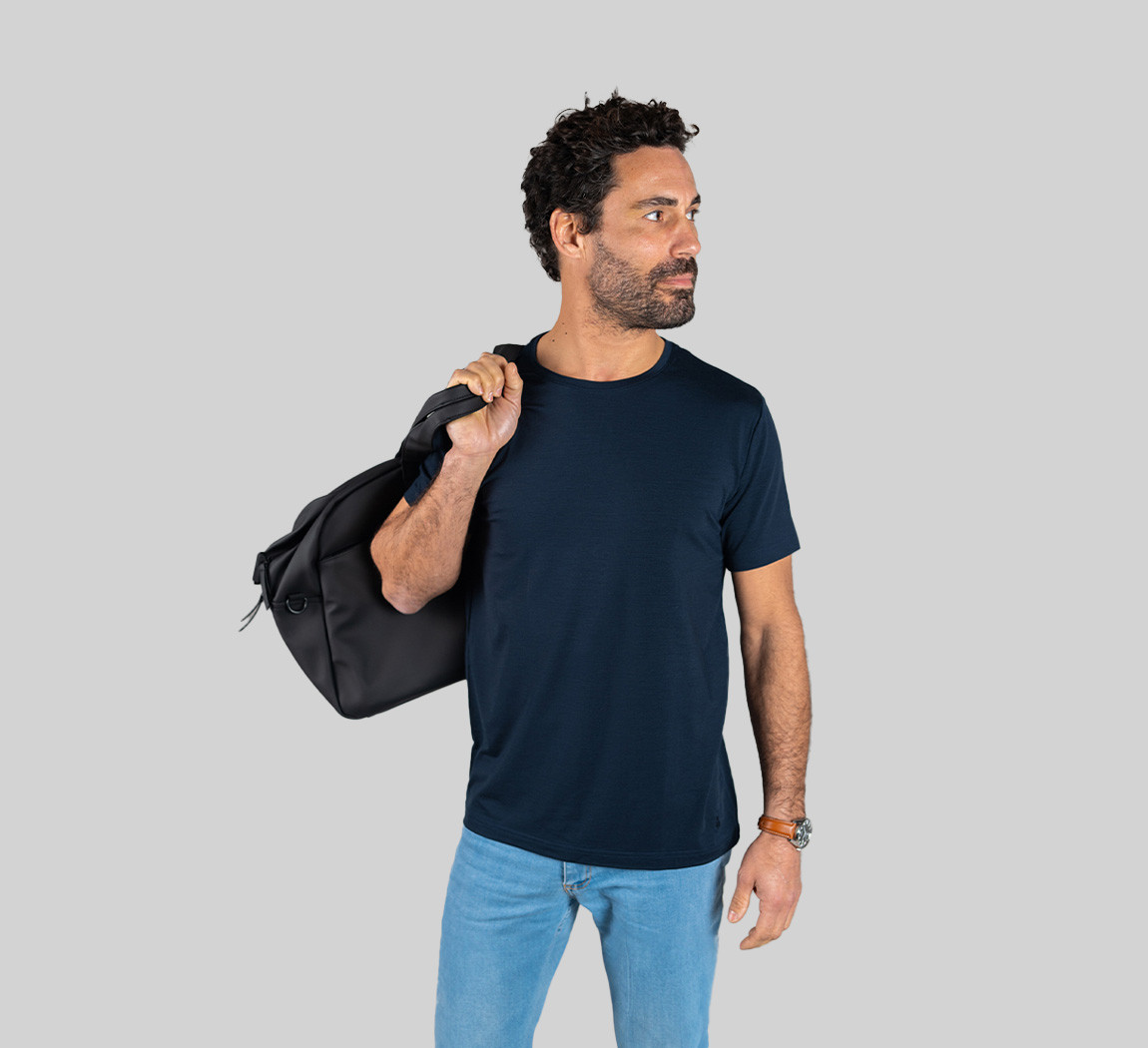Man
Woman
Outlet
About us



The great comeback of the sweatpants
Merino softness inside. Elegant flannel outside.
Sweatpants sacrifice elegance.
Dress pants sacrifice comfort.
Here’s the Seagale Hybrid Sweatpants:
Elegant stretch flannel exterior
Ultra-fine Merino jersey lining down to the knees
Semi-elastic waistband with visible drawstring for perfect balance
Technical comfort, urban style.
One pant, two worlds fused together.
Enjoy 20% off with the code: SWEATPANTS


Join the club !
Sign up for our newsletter
Step into the SEAGALE universe and be the first to discover our new arrivals, exclusive offers, and latest inspirations.
By subscribing to our newsletter, you’ll gain access to:
• Sneak peeks at our collections and collaborations.
• Exclusive offers reserved just for our subscribers.
• Tips to combine style, comfort, and sustainability in your daily life.
👉 Join the club now and never miss a moment of the SEAGALE journey.
E-mail registered successfully
E-mail already registered
Invalid e-mail format
0
T-shirts & polos
Pullovers & sweatshirts
Pants
Shirts
Jackets & coats
Shorts
Swimwear
Underwear
Footwear
Luggage
Accessories
Gift cards
Outlet
See all products
T-shirts & polos
Pullovers & Sweatshirts
Pants
Shirts
Shorts
Dresses
Swimwear
Leggings
Underwear
Luggage
Accessories
Gift cards
Outlet
See all products
See category
ACTION MERINO T-SHIRT
Your new favorite T-shirtPERFORMANCE MERINO T-SHIRT
The first indestructible wool T-shirtEVOLUTION MERINO T-SHIRT
The structured T-shirtEVOLUTION LOGO T-SHIRT
The signature T-shirt - Limited EditionULTRADRY MERINO T-SHIRT
Beat the heatDRY HEMP T-SHIRT
Summer Made SimpleRETRO SPORT T-SHIRT
The ultra-lightweight technical T-shirtPREMIUM MERINO T-SHIRT
The high performance T-shirtSee category
MERINO RAGLAN PULLOVER
Natural style and comfortULTRA MERINO PULLOVER
The sweater that changes the rulesMERINO TENCEL PULLOVER
The sweater you will never want to take offMERINO SWEATER
The lightweight sweater perfectedFUTURE KNIT PULLOVER
The High-Tech SweaterHYBRID MERINO PULLOVER
The sweater of a lifetimePREMIUM MERINO PULLOVER
The top-of-the-range warm sweaterLAMBSWOOL CABLE PULLOVER
The cozy pulloverSee category
CORDURA MERINO CHINOS
Technical elegancePERFORMANCE CHINOS
Pants on steroidsFREEDOM PANTS
The ultralight pantsHYBRID PANTS
The cameleon pantsHEMP PANTS
The Fresh PantsECOMOTION CHINOS
The responsible pant that moves with youPOWER MERINO CHINOS
The 4-season pantsCANVAS CHINOS
The indestructible technical pantSee category
CORE JACKET
The jacket that simplifies your daysFREEDOM WINDBREAKER
The versatile superlight jacketPOWER MERINO JACKET
The high-performance versatile jacketEVERYDAY JACKET
The mid-season jacket reinventedADVENTURE JACKET
The all-terrain jacketSUPERTRUCKER
The denim jacket that moves with youCANVAS TRUCKER
The denim jacket of the futureSTORM JACKET
The high performance waterproof windbreakerSee category
PERFORMANCE SHORTS
Bermuda shorts reinventedEVERYDAY SHORTS
The ready-for-anything shortsCARGO SHORTS
The shorts of the adventurersFREEDOM SHORTS
Get the best of your summertimeHEMP SHORTS
The fresh shortsRETRO SPORT SHORT
The ultra-light technical shortEVOLUTION MERINO SHORTS
The Ideal Knit ShortSee category
2-IN-1 SWIMSHORT
Stylish and comfortable swimshortsSHORT SWIMSHORT
2-in-1 printed swimshortsANNIVERSARY 2-IN-1 SWIMSHORT
Special 10 years limited editionFREEDOM SHORTS
Get the best of your summertimeRECYCLED TECH SWIMSHORT
Eco-friendly performance swimshorts2-IN-1 SWIM BOXER
The smart and performance swim boxers2-IN-1 KIDS SWIMSHORT
For Children's ComfortACTION MERINO T-SHIRT
55% Tencel - 37% Extrafine Merino Wool - 8% Elastane
Lightweight, breathable and odorless with its extra-fine merino wool content. It is also our softest, most fluid and most comfortable T-shirt.

PERFORMANCE MERINO T-SHIRT
52% Extra-fine Merino Wool - 48% Cordura
The fusion of merino wool and Cordura, an ultra-tough technical fiber. The result? A travel T-shirt that won’t rip, keeps its shape, and looks sharp even after miles of adventure. The first merino T-shirt you’ll never need to replace.

EVOLUTION MERINO T-SHIRT
74% Tencel - 23% Extrafine Merino Wool - 3% Elastane
The thick and opaque T-shirt with a straight and elegant drape that will hide your bodyshape while optimizing airflow. This material developed by Seagale is a revolution. Merino wool loops on the inside. Tencel yarns on the outside. The best of both worlds for a surprisingly invisible performance.

EVOLUTION LOGO T-SHIRT
74% Tencel - 23% Extrafine Merino Wool - 3% Elastane
The T-shirt with our discreet logo on the chest, using our Evolution Merino T-shirt style: the most elegant in the range.

ULTRADRY MERINO T-SHIRT
60% Merino Wool - 40% Polypropylene
Our ultra-light, hard-wearing T-shirt dries in a flash, thanks to its composition of extra-fine merino wool combined with polypropylene. Perfect for those hot summer days.

DRY HEMP T-SHIRT
55% Hemp - 45% Recycled Dry Polyester
An ultra-lightweight tee in hemp and recycled polyester, built to beat the heat, dry fast, and last all summer. Technical, natural, effortless, your go-to when the temps rise (and don’t come down).

RETRO SPORT T-SHIRT
90% Recycled Polyester - 10% Recycled Elastane
This vintage look sports T-shirt is highly breathable and quick-drying. It’s made from ultra-lightweight mesh material that is 100% recycled.

PREMIUM MERINO T-SHIRT
100% Extrafine Merino Wool
Our most premium T-shirt. Knitted in 100% extra-fine merino wool jersey, it's THE shirt you want if you only need one. 100% performance. 100% versatlity.

ACTION MERINO V-NECK TEE
55% Tencel - 37% Extrafine Merino Wool - 8% Elastane
Lightweight, breathable and anti-odor V-neck thanks to the presence of merino wool. Ultra-soft and ultra-comfortable.

PERFORMANCE MERINO V-NECK
52% Extra-fine Merino Wool - 48% Cordura
A high-performance tee blending merino wool and Cordura for unmatched durability and comfort. The V-neck cut adds a laid-back touch to a technical piece built to last — and built to move.

PERFORMANCE MERINO LONG SLEEVES T-SHIRT
52% Extra-fine Merino Wool - 48% Cordura
Its technical knit blends ultrafine Merino wool with next-gen Cordura® — delivering unmatched softness, featherlight comfort, and serious durability.

ACTION MERINO RAGLAN LONG SLEEVES
55% Tencel - 37% Extrafine Merino Wool - 8% Elastane
The ideal long sleeve T-shirt to wearas a baselayer. Ultra-soft and thermo-regulating, this fine jersey made of Tencel and extra-fine merino wool is a joy to wear.

ULTIMATE MERINO TURTLENECK
The perfect thin turtleneck base layer for cool days. Crafted from a robust blend of merino wool and nylon, this piece will quickly become your best ally when the temperature drops. Its minimalist design allows you to wear it for sports or with dressier outfits.

PREMIUM MERINO LONG SLEEVES T-SHIRT
100% Extrafine Merino Wool
Our most premium T-shirt material. Knitted in 100% extra-fine merino wool jersey, this is the ultimate thermal long-sleeve T-shirt that will keep you comfortable in a wide range of temperatures. Can be worn next to the skin under a sweater or as a simple tee.

PERFORMANCE MERINO HENLEY
52% Extra-fine Merino Wool - 48% Cordura
Blending Merino wool and Cordura®, it’s breathable, odor-resistant, and tough enough for anything — yet incredibly soft and comfortable. Topped with a button placket for a refined touch that elevates any look.

DRY HEMP HENLEY
55% Hemp - 45% Recycled Dry Polyester
Lightweight, technical, and breathable, this Henley is built for your most active days. A unique blend of natural hemp and recycled polyester keeps you dry, comfortable, and effortlessly sharp from morning to night.

PERFORMANCE MERINO LONG SLEEVES HENLEY
52% Extrafine Merino Wool – 48% Cordura
A long-sleeve Henley designed to last, endure, and adapt to all your adventures. Merino + Cordura: the natural comfort of merino wool combined with the technical durability of Cordura, brought together in an all-terrain piece.

EVOLUTION MERINO HENLEY
74% Tencel - 23% Extrafine Merino Wool - 3% Elastane
The thick and opaque henley with a straight and elegant drape that will hide your bodyshape while optimizing airflow. This material developed by Seagale is a revolution. Merino wool loops on the inside. Tencel yarns on the outside. The best of both worlds for a surprisingly invisible performance.

PIQUÉ MERINO POLO
55% Tencel - 37% Extrafine Merino Wool - 8% Elastane
Classic polo shirts are made of cotton, take hours to dry and retain odors. Our premium performance polo is knitted in a beautiful extrafine merino wool piqué for exceptional comfort. Soft, flowing and lightweight, it lets your body breathe when you need the most.

RIVIERA MERINO POLO
70% Extrafine merino wool (RWS certified) - 30% Recycled polyamide (GRS certified)
Polo knitted in France, entirely seamless, in a textured vintage rice-grain knit. Premium technical yarn blending certified extrafine merino wool and recycled polyamide.

EVERYDAY MERINO POLO
87% Extrafine Merino Wool - 13% Nylon filament
A stunning premium polo, elevated by merino wool. Premium details and a technical yarn with a nylon wrap for enhanced durability. Your most stylish and technical polo.

PIQUÉ MERINO LONG SLEEVES POLO
55% Tencel - 37% Extrafine Merino Wool - 8% Elastane
A nice long sleeves polo shirt in our lightweight, textured fabric. Performing but also stylish, this is the chic but comfy piece you'll want to wear everyday.

ACTION MERINO TANK
55% Tencel - 37% Extrafine Merino Wool - 8% Elastane
Ultra-soft, both light and anti-odor thanks to the presence of merino wool. The tank top for sports but not only.

RETRO SPORT TANK
90% Recycled Polyester - 10% Recycled Elastane
The vintage-look sports tank top is highly breathable and quick-drying, made from an ultra-lightweight and perforated material that is 100% recycled.

MERINO RAGLAN PULLOVER
100% Merino Wool
A 100% merino wool sweater that combines softness and comfort for everyday wear. It naturally regulates temperature, keeps you dry with its breathability, and is easy to machine wash. With its versatile style and eco-friendly commitment, it’s the perfect companion for all seasons.

ULTRA MERINO PULLOVER
100% ultrafine Merino wool
The crew neck taken to its peak. A dense, soft knit that transforms an essential into an iconic piece.

MERINO TENCEL PULLOVER
60% Extrafine Merino Wool - 40% Tencel
The ideal sweater in a medium weight and dense, robust Milano knit. Soft and comfortable, it doesn't stretch out, doesn't pilling and regulates your body temperature perfectly.

MERINO SWEATER
60% Extrafine Merino Wool - 40% Tencel
A soft, comfortable lightweight sweater knitted in our exclusive Tencel and merino wool yarn. A year-round essential.

FUTURE KNIT PULLOVER
70% Recycled Wool - 25% Recycled Polyamide - 5% Silk
A beautiful, soft, and warm sweater knitted with plenty of texture and a gorgeous nepped yarn. Entirely made in France from recycled wool using zero-waste seamless knitting.

HYBRID MERINO PULLOVER
100% merino wool
Our exclusive collaboration with Le Minor, a sweater manufacturer in Brittany since 1922. A piece that unites our two worlds: the expertise of a century-old house with technical fabric inserts to create the sweater of a lifetime.

PREMIUM MERINO PULLOVER
100% merino wool
A beautiful thick, heavy sweater knitted in 100% extrafine merino wool. A jumper with a chic country look to accompany you on cooler days.

LAMBSWOOL CABLE PULLOVER
100% Extrafine Lambswool
A beautiful 100% extrafine lambswool sweater that will stand out from the crowd and that you'll be wearing for years.

ULTRA MERINO TURTLENECK
100% ultrafine Merino wool
The roll neck in its ultimate form. Enveloping warmth, radical elegance, absolute comfort.

ULTRA MERINO ZIP PULLOVER
100% ultrafine Merino wool
The sweater that adapts to your pace. Protection when needed, freedom the moment you open it.

ULTIMATE MERINO TURTLENECK
The perfect thin turtleneck base layer for cool days. Crafted from a robust blend of merino wool and nylon, this piece will quickly become your best ally when the temperature drops. Its minimalist design allows you to wear it for sports or with dressier outfits.

MERINO TENCEL TURTLENECK
60% Extrafine Merino Wool - 40% Tencel
Keep your neck warm with this piece that is neither too light nor too heavy featuring a dense and sturdy Milano knit. Soft and comfortable with its blend of wool and Tencel, it won't stretch out, won't pill and will regulate your body temperature perfectly.

MERINO TENCEL CARDIGAN
60% Extrafine Merino Wool - 40% Tencel
Our classic mid-weight cardigan in our favorite Milano knit of Tencel and extrafine merino wool. Great for layering over a shirt or T-shirt.

LAMBSWOOL CARDIGAN
100% Extrafine Lambswool
This thick ribbed cardigan with shawl collar will quickly become a winter staple with its 100% extra soft lambswool content.

ESSENTIAL MERINO SWEATSHIRT
59% Organic Cotton - 41% Merino Wool
This sweatshirt redefines the classic crewneck with elegance and comfort. Organic cotton on the outside and merino wool on the inside for a natural warmth-regulating softness. A simple, essential sweatshirt, perfect for any occasion.

ESSENTIAL MERINO ZIP SWEATER
59% Organic Cotton - 41% Merino Wool
The sweatshirt that combines cool style with high-end comfort. Its organic cotton exterior and merino wool interior provide softness and thermal regulation. Perfect for accompanying you everywhere, with elegance and durability.

ESSENTIAL MERINO JACKET
59% Organic Cotton - 41% Merino Wool
Combines elegance and functionality with its high-quality double zip. Organic cotton exterior and merino wool interior provide perfect softness and thermal regulation. A versatile jacket, designed for style and everyday comfort.

ESSENTIAL MERINO HOODIE
59% Organic Cotton - 41% Merino Wool
This hoodie combines simplicity with exceptional comfort. Organic cotton exterior and merino wool interior provide warmth-regulating softness. With its spacious pocket and relaxed fit, it’s the perfect everyday companion.

ESSENTIAL MERINO ZIP HOODIE
59% Organic Cotton - 41% Merino Wool
This hoodie brings both comfort and practicality with its high-quality double zip. Organic cotton on the outside and merino wool on the inside provide thermoregulated softness. Versatile and stylish, it’s designed to accompany you everywhere with elegance.

CLOUD HOODIE
88% Organic Cotton - 12% Hemp / Insulation: Climashield Apex 100% Polyester
An innovative hoodie blending natural cotton and hemp fibers with Climashield Apex insulation for exceptional thermal comfort. Warm, insulating, and breathable, it’s perfect for all your adventures.

EXPLORATION HOODIE
40% Polyester - 32% High Tenacity Polyamide - 20% Wool - 8 %Elastane
The piece you need to explore the world. This outdoor hoodie is made of a neoprene-like material with an extraordinarily durable outer shell and a warm, ultra-soft wool fleece inner face. Take it with you wherever you go.

CORDURA MERINO CHINOS
59% Merino wool - 39% Cordura - 2% Lycra (Elastane)
A pant built to last, move, and stay sharp. Crafted from our exclusive Cordura–Merino blend for a fabric that’s stretchy, breathable, and incredibly durable.

PERFORMANCE CHINOS
88% Nylon - 12% Elastane
A stylish and ultra-versatile chinos with extreme stretch for optimal comfort. Breathable, water repellent and quick drying. A life-changing piece.

FREEDOM PANTS
96% Nylon - 4% Elastane
The ultimate pants for all those times when you just can't wear shorts. Ultralight and super breathable, perfect for the hottest days of the year.

HYBRID PANTS
69% Nylon - 10% Dyneema - 16% PE Coolmax - 5% Elastane
Our most technical and futuristic pants. Incredibly durable fabric with Dyneema mesh, stretch construction and a soft, breathable interior. The pants that will take you to the end of the world and still look like new.

HEMP PANTS
55% Tencel - 40% Hemp - 5% Elastane
The ideal summer pants engineered in a natural, cool and comfortable material.
Cut in a loose style and made to breathe, it is perfect for casual looks on sunny days.

ECOMOTION CHINOS
67% Hemp – 28% Recycled Nylon Econyl® – 5% Elastane
A technical, lightweight pant crafted for those who live between city and nature, who travel light and consciously, and who want an elegant yet uncompromisingly comfortable and eco-friendly piece.

POWER MERINO CHINOS
67% Recycled Nylon - 23% Merino Wool - 10% Lycra
An innovative 4-season pant made with a unique fabric. The exterior is stretch, water-repellent recycled nylon. The interior is 100% superfine merino wool for excellent temperature and odor management. Comfort, softness, and warmth in a single pant.

CANVAS CHINOS
96% Nylon - 4% Elastane
Cut from a fabric inherited from workwear, this is our ultra-durable, elegant pant. Its sophisticated design with front pleats provides room for the thighs. The stretch of the fabric and the elastic waistband with drawstring ensure comfort for everyday wear.

EVERYDAY JEANS
96% Nylon - 4% Elastane
If you had to keep only one pant it would be this one. Lightweight, rugged, water repellent, breathable, versatile and quick drying. The ultimate 5-pocket for everyday wear and more. Ideal for travelers and minimalists.

CANVAS JEANS
96% Nylon - 4% Elastane
The jeans designed for life. Imagine your favorite denim, but lighter, stronger, and more comfortable with a better fit. Practical minimalist design with deep, accessible pockets and a hint of stretch for comfort.

SUPERDENIM
75% Cotton - 24% PAHT - 1% Lycra Toughmax®
The Denim of a Lifetime. The One You'll Wear for Decades Without a Single Hole. Cut from patented Armalith® indestructible and stretchy denim fabric, it has the drape and look of authentic jeans with superior resistance. Maybe the last denim you'll ever need to buy.

EVERYDAY CARGO
96% Nylon - 4% Elastane
The light but strong pants with lots of pockets for all your storage. Breathable, stretchy and water repellent, these are the perfect pants to take on the trail.

MERINO SWEATPANTS
Outer fabric: 54% Merino wool – 45% Polyester – 1% Elastane Inner fabric: 52% Merino wool – 48% Cordura®
A unique hybrid pant: an elegant stretch flannel exterior, lined inside with ultra-fine Merino for unmatched softness and thermoregulation. Urban style, absolute comfort — halfway between joggers and tailored pants, it doesn’t choose.

CORDURA MERINO DRESS PANTS
59% Merino wool - 39% Cordura - 2% Lycra (Elastane)
A dress pant built to last, move, and stay sharp. Crafted from our exclusive Cordura–Merino blend for a fabric that’s stretchy, breathable, and incredibly durable.

SMART MERINO PANTS
54% Technical Polyester - 44% Merino Wool - 2% Elastane
Our most elegant pants, both lightweight and comfortable. Wear with our blazer for a complete suit, or with a T-shirt for a casual chic outfit.

MOTION FLANNEL PANTS
54% Merino Wool - 45% Recycled Polyester - 1% Elastane
A superb pair of pants made from soft and warm wool flannel, perfect for an elegant look in any situation. Highly comfortable thanks to the stretch fabric, refined cut, and elastic waistband with drawstring. You won't want to take them off.


ESSENTIAL MERINO JOGGERS
59% Organic Cotton - 41% Merino Wool
A premium pair of joggers made from thick double-face fleece: organic cotton exterior and insulating, soft loops of superfine merino wool on the inside.
Your best joggers yet.

ACTIVE STRETCH SHIRT
88% Nylon - 12% Elastane
The look of a shirt, the comfort of a T-shirt. Cut from a lightweight, ultra-stretchy technical fabric with incredible comfort, it's wrinkle-free and quick-drying. Ideal for hot weather, it is our most comfortable and breathable shirt.

MAO STRETCH SHIRT
88% Nylon - 12% Elastane
The look of a shirt, the comfort of a T-shirt. Cut from a lightweight, ultra-stretchy technical fabric with incredible comfort, it's wrinkle-free and quick-drying. Ideal for hot weather, this is our most comfortable and breathable shirt. The band collar adds a touch of originality.

CORDURA MERINO SHIRT
Wrinkle-resistant, breathable, and ultra-durable, this shirt combines merino wool and Cordura® in an exclusive Italian-woven fabric. Fresh all day, flawless in any situation. Designed to move, built to last.

MERINO JERSEY SHIRT
52% Extra-fine Merino Wool - 48% Cordura
A fluid, refined silhouette in a high-performance fabric made for adventure.
Featherlight, breathable, and tough — this shirt moves with you, wherever the day leads.

HEMP COOL SHIRT
88% Organic Cotton - 12% Hemp
A Cuban-collar shirt made from an innovative cotton-hemp knit. Perfect drape, zero cling, and incredible freshness — even in the heat.

HEMP SHIRT
55% Tencel - 40% Hemp - 5% Elastane
A cool and easy-to-wear shirt in our hemp fabric, perfect for the hottest months. Can be worn both as a shirt or an overshirt, paired with our hemp shorts or pants.

LINEN SUMMER SHIRT
100% Linen
Enjoy a cool summer in this beautiful made in Italy 100% linen fabric with a touch of stretch for comfort.


MERINO FLANNEL SHIRT
100% Extrafine Merino Wool
This exceptional quality 100% extra-fine merino wool flannel will amaze you in the cooler months. A button-down style, subtle heathered colors and an addictive softness will make it your favorite winter shirt.

EVERYDAY OVERSHIRT
96% Nylon - 4% Elastane
Meet the hybrid piece that's part shirt, part jacket, and all awesome. Easy to wear, easy to pair. Ultra-versatile, light, and breathable - it's the perfect match for our Everyday Jeans. Designed to perform with style.

CASENTINO OVERSHIRT
70% Recycled wool - 30% Nylon
The overshirt that stands out with a unique brushed Casentino effect. Its 100% extrafine merino wool jersey lining provides instant thermal comfort. A piece of clothing you won't find anywhere else.

CORE JACKET
96% Nylon – 4% Elastane
The Core Jacket combines durability, stretch, and breathability in a clean, versatile design built for everyday use. Water-repellent, comfortable, and timeless, it’s the essential jacket that adapts to every situation.

FREEDOM WINDBREAKER
96% Nylon - 4% Elastane
The compact and versatile windbreaker. Ultra-light and ultra-breathable, it will protect you from light rains and you'll forget you're wearing it.

POWER MERINO JACKET
67% Recycled Nylon - 23% Merino Wool - 10% Lycra
A revolutionary 4-season jacket, designed with an exclusive fabric. Its stretch and water-repellent recycled nylon exterior protects you from the elements. Inside, superfine merino wool ensures optimal temperature and odor management. A perfect blend of comfort, softness, and warmth, all in one jacket.

EVERYDAY JACKET
96% Nylon - 4% Elastane
The essential high-performance mid-season jacket with its stretch and robust fabric. A piece that goes with everything.

ADVENTURE JACKET
96% Nylon - 4% Elastane
The military-inspired jacket reinvented with our futuristic fabrics. Stretchy, comfortable and even stronger, it will take you everywhere and for a long time.


CANVAS TRUCKER
96% Nylon - 4% Elastane
Our jacket cut like a denim jacket, but cut with our technical workwear fabric. Its efficient minimalist design makes it easy to wear anywhere. Stretch, breathable, water-repellent and quick-drying, it's the ideal mid-season jacket.

STORM JACKET
Exterior 95% Polyester - 5% Elastane / Membrane 100% PU / Interior 100% Polyester
This lightweight technical jacket is waterproof, windproof and also highly breathable. Retractable hood in the collar and a special design with waterproof flaps and zippers. Will keep you dry even in the most extreme outdoor conditions.

CORDURA MERINO BLAZER
59% Merino wool - 39% Cordura - 2% Lycra (Elastane)
The blazer you’ll wear without even thinking about it. A stunning wool blend, enhanced with Lycra for optimal stretch and Cordura for durability through all your adventures. With its tailored fit and unlined, deconstructed design, it’s the perfect blazer for James Bond.

SMART MERINO BLAZER
54% Polyester - 44% Merino Wool - 2% Elastane
Stretch, lightweight and breathable but also very elegant blazer. The ideal suit jacket for travel and everyday wear.

NOMAD MERINO FLEECE
48% Merino Wool - 36% Polyester - 16% Polyamide
Une magnifique polaire à base de laine mérinos pour un maximum de performance naturelle. Douce et chaude, elle est également particulièrement polyvalente avec un look urbain facile à assortir.

MOVEMENT TRENCH
96% Nylon - 4% Elastane
The Technical, Elegant Trench. Designed with a durable, stretch, and breathable performance fabric, this is your all-season go-to layer.

RECYCLED WOOL PARKA
100% Recycled merino wool
A Classic Winter Coat, Reinvented. Crafted from a premium, 100% recycled wool fabric, this modern parka has it all: a roomy hood, central zipper, and loads of practical pockets.

AIR JACKET
87% Nylon – 13% Elastane
High-performance insulation, featherlight feel, absolute comfort. The jacket that keeps you warm without weighing you down.

AIR VEST
87% Nylon – 13% Elastane
Innovation that keeps you warm without slowing you down. A vest designed for those who move.

REVERSIBLE MERINO VEST
100% Merino Wool
The reversible sleeveless down jacket with a wool flannel side and a technical nylon side. Padded with wool insulation to keep your body warm in style. The ideal piece to regulate your temperature easily.

MERINO PUFFER
Outer fabric and lining 100% merino wool - Padding: 100% Climashield Apex
This piece combines the timeless style of a short wool jacket with the lightness and warmth of a technical puffer. The Climashield Apex insulation provides instant warmth, while merino wool does the rest: elegant, comfortable, and high-performing.

HYBRID MERINO DOWN
Merino Wool - Natural Down
Your Ideal Winter Ally This down jacket is your perfect companion for winter, combining style and comfort. Made with luxurious Italian merino wool flannel by Reda and filled with recycled down, it wraps you in soft, natural warmth even in the harshest conditions. With refined details and a timeless look, this jacket is perfect for any setting, from city streets to mountain trails, always keeping you looking sharp.

STORM PARKA
95% Polyester - 5% Elastane
This parka is your ultimate protection for cold and extreme outdoor conditions. This waterproof and breathable jacket will keep you warm and dry with its technical insulation and high performance membrane.

PERFORMANCE SHORTS
88% Nylon - 12% Elastane
The ultra-comfortable dress shorts with a highly stretchy technical fabric. Breathable, water-repellent and quick drying. Water ready details to jump in anytime.

EVERYDAY SHORTS
96% Nylon - 4% Elastane
A technical short to wear again and again: stretchy and light for comfort, dries in no time and lasts a lifetime. The one you'll take on your trip around the world.

CARGO SHORTS
96% Nylon - 4% Elastane
The shorts with tons of pockets for those who prefer to live hands-free. Lightweight, rugged, super-breathable technical fabric. You're ready for adventure.

FREEDOM SHORTS
96% Nylon - 4% Elastane
Ultralight hybrid shorts with a versatile look: perfect for all your outdoor activities, on land or in the sea.

HEMP SHORTS
55% Tencel - 40% Hemp - 5% Elastane
The ideal summer pants engineered in a natural, cool and comfortable material.
Cut in a loose style and made to breathe, it is perfect for casual looks on sunny days.

RETRO SPORT SHORT
90% Recycled Polyester - 10% Recycled Elastane
The retro-style sports short offers exceptional breathability and quick-drying, made from an ultra-light and perforated fabric, 100% recycled.

EVOLUTION MERINO SHORTS
74% Tencel - 23% Extrafine Merino Wool - 3% Elastane
A loungewear short made of Tencel, Merino wool, and elastane.
Soft, light, and breathable — fleece-like comfort, with performance built in.

2-IN-1 SWIMSHORT
88% Nylon - 12% Elastane
Seagale's signature swimsuit. An ultra-versatile swimshort with built-in boxers for unparalleled comfort. Perfect for sports, city and beach.

SHORT SWIMSHORT
88% Nylon - 12% Elastane
The short version of our ultra-comfortable swimsuit with built-in boxer shorts. Perfect for sports and the beach.

ANNIVERSARY 2-IN-1 SWIMSHORT
88% Nylon - 12% Elastane
The signature Seagale swimsuit in its 10th-anniversary edition. An ultra-versatile swim short with an integrated boxer for unparalleled comfort. Perfect for sports, the city, and the beach.

FREEDOM SHORTS
96% Nylon - 4% Elastane
Ultralight hybrid shorts with a versatile look: perfect for all your outdoor activities, on land or in the sea.

RECYCLED TECH SWIMSHORT
98% Recycled polyester - 2% Elastane
Our fastest drying swimsuit. Lightweight, recycled fabric with a touch of stretch for comfort and a minimalist design with minimal seams. You'll be dry in no time.

2-IN-1 SWIM BOXER
73% Nylon - 27% Elastane
A hybrid swimsuit in an almost skin-tight fit with an integrated brief for support. Ultra-stretch and comfortable.

2-IN-1 KIDS SWIMSHORT
88% Nylon - 12% Elastane
The kids' version of our 2-in-1 Swimshort that will definitively end irritations for your little ones.

ULTIMATE MERINO BOXER
78% Extrafine Merino Wool - 19% Nylon - 3% Elastane
The ultimate merino wool boxer. A merino and nylon blend with a touch of elastane for a snug support ideal for all your activities.

PREMIUM MERINO BOXER
80% Extrafine Merino Wool - 20% Nylon
Forget all your cotton underwear and switch to these soft, breathable and quick drying wool boxers. A rich blend of extrafine merino wool for superior anti-odor performance and a touch of nylon for durability. Warning tough: this is a highly addictive product.

ULTIMATE MERINO BRIEF
80% Extrafine Merino Wool - 20% Nylon
For the unconditional fans of briefs, here is the one you will end up wearing the most thanks to its high-end material in extra-fine merino wool.

AIR BOXER
75% Polyamide - 25% Elastane
The hyper-breathable underwear designed in our 100% recycled open mesh. Perfect for letting your body wick away moisture during exercise.

MERINO NO SHOW SOCKS
40% Extrafine Merino Wool - 30% Nylon - 28% Polypropylene - 2% Elastane
The invisible thin, anti-odor, hyper-breathable and durable socks. They also have excellent support thanks to a thin silicone band on the heel. Can be worn all year round, whatever the activity.

MERINO BUSINESS SOCKS
39% Extrafine Merino Wool - 30% Polyamide - 29% Polypropylene - 2% Elastane
A pair for the city, knitted in our high-performance, odor-resistant merino wool. Breathable and thermo-regulating, they also wick away perspiration quickly.

MERINO PERFORMANCE SOCKS
40% Extrafine Merino Wool - 30% Nylon - 28% Polypropylene - 2% Elastane
Anti-odor, hyper-comfortable, cushy and versatile. Breathable technical knitting adapted to intense sports practice.

SUPERWARM MERINO SOCKS
47% Merino wool - 39% Acrylic - 13% Polyamide - 1% Elastane
Warm up your feet with our warmest socks, featuring a full thick merino wool terry.

PREMIUM MERINO LEGGING
80% Extrafine Merino Wool - 20% Nylon
A legging in our rich extrafine merino wool blend for fantastic thermal comfort. Wear under your favorite pants to warm up your legs or at home to hang out in 100% comfort.

MERINO SNEAKERS
65% Merino Wool - 35% Polyester
Merino wool sneakers combining style, softness, and thermal regulation for exceptional year-round comfort.

PREMIUM MERINO SNEAKERS
63% Merino Wool - 37% Cordura
Stylish and comfortable merino wool shoes to keep your feet at the right temperature with maximum comfort.

PREMIUM LEATHER SNEAKERS
100% High-end grained leather
High quality shoes made of grained leather and crafted in Italy. Versatile minimalist design and premium materials for superior comfort and durability.

AIR SNEAKERS
100% Perforated nappa leather
Give your feet a lightweight feel with our breathable perforated leather sneakers.
Designed for the hottest days of summer, these sneakers offer optimal ventilation while being incredibly comfortable.


WEEKENDER BAG
100% Polyurethane
The ultimate weekender with lots of pockets for all your storage. Can be worn as a backpack to keep your hands free and features a waterproof fabric to keep your stuff dry at all times.

CITY WAIST BAG
100% Polyurethane
A waterproof urban sling with effective styling for all your little daily trips.

MINIMALIST WALLET
96% Nylon - 4% Elastane
The card holder in its purest expression. Cut from our sturdy stretch material, you'll be able to slip in all your cards and they'll be held securely in place for a minimum occupied space. Fits perfectly in the pocket.

LINEN TRAVEL TOWEL
100% Linen
An ultra-light, ultra-compact towel made to follow you anywhere. Crafted from naturally soft washed linen, it dries fast, ages beautifully, and won’t hold onto sand.

ULTRALIGHT CAP
76% Nylon – 24% Elastane
The stretchy, lightweight and breathable cap that fits your head perfectly and is easy to forget you have on.

MERINO FLANNEL CAP
100% merino wool
A beautiful, elegant cap made from our thick, dense 100% merino wool flannel. It will keep you warm and protect you from the rain.

BIO POLARIZED SUNGLASSES
100% Bioacetate
A sustainable frame, premium lenses, and a flawless fit — wherever life takes you. These action-ready sunglasses combine performance, durability, and style to keep up with you all summer long.

SMART BELT
Buckle 100% Inox / Strap 80% Polyester - 5% Viscose - 15% Elastodiene
Change the color as much as you want with our belt concept: 1 buckle, 6 colors of stretchable and interchangeable straps. To match all your outfits.

SMART BUCKLE
Inox
Just the buckle of our smart belt. Made in France in a fine stainless steel.

PREMIUM CASHMERE SCARF
50% Recycled Cashmere - 50% Extrafine Merino Wool
A soft and warm knitted scarf, neither too thin nor too thick, to take with you wherever you go.

ACTION MERINO TUBE
55% Tencel - 37% Extrafine Merino Wool - 8% Elastane
This extra-fine merino wool tube doesn't take up much space but will come in handy for a variety of situations: the essential accessory for your life in action.

PREMIUM CASHMERE BEANIE
50% Recycled Cashmere - 50% Extrafine Merino Wool
A soft, warm beanie, neither too thin nor too thick, to take with you wherever you go.

PREMIUM MERINO PLAID
90% Extrafine merino wool - 10% Nylon
A beautiful plaid in a thick, luxurious knit of extrafine merino wool. The material is brusheA beautiful plaid in a thick, luxurious knit of extrafine merino wool. The material is brushed on both sides for instant softness and warmth.d on both sides for instant softness and warmth.

DELICATE WOOL WASH
99% natural ingredients
The ultra-concentrated, water-soluble detergent made in France. Dilute this powder in one liter of water, and you’ll have 33 washes for delicate fabrics—perfect for caring for your Seagale garments.

CLOSET CEDAR CIRCLE
Cedar rings made from 100% natural aromatic red cedar, free from harmful chemicals. Effectively repels moths.

ANTI-PILLING RAZOR
Have you ever wanted to erase those little pimples that don't look clean? It's now a matter of seconds with this handy little tool that will make those pimples an old memory.



WOMAN MERINO T-SHIRT
55% Tencel - 37% Extrafine Merino Wool - 8% Elastane
The T-shirt that will make you forget all your cotton T-shirts. Lightweight, breathable and anti-odour thanks to the presence of merino wool. It is also our softest and most comfortable T-shirt.

WOMAN PERFORMANCE MERINO T-SHIRT
52% Extra-fine Merino Wool - 48% Cordura
Soft, strong, breathable, and odor-resistant — this tee is made to move with you. Its feminine fit and classic crew neck make it a versatile essential for every adventure.

WOMAN EVOLUTION MERINO T-SHIRT
74% Tencel - 23% Extrafine Merino Wool - 3% Elastane
Your oversize crew neck T-shirt in our thick, neat fabric with a great drape. Does not stick to the skin and regulates your temperature for everyday comfort.

WOMAN PREMIUM MERINO T-SHIRT
100% Extrafine Merino Wool
The most performant of all our T-shirts. A beautiful 100% extrafine merino wool jersey for maximum softness and comfort. The T-shirt you'll take everywhere.

DRY HEMP WOMAN T-SHIRT
55% Hemp - 45% Recycled Dry Polyester
The summer tee that moves with you and keeps its cool. Lightweight, naturally breathable, and subtly textured, it blends hemp and recycled polyester for effortless style and all-day comfort.

WOMAN MERINO V-NECK T-SHIRT
55% Tencel - 37% Extrafine Merino Wool - 8% Elastane
Your plunging V-neck T-shirt in our lightweight, high-performance, ultra-comfortable fabric. You'll find yourself wearing it very often.

WOMAN MERINO LONG SLEEVES T-SHIRT
55% Tencel - 37% Extrafine Merino Wool - 8% Elastane
This technical long-sleeve T-shirt is lightweight, breathable and ultra-soft. Regulates your body temperature and does not retain odors so it can be worn all year round.

WOMAN PERFORMANCE MERINO LONG SLEEVES T-SHIRT
52% Extra-fine Merino Wool - 48% Cordura
The long-sleeve T-shirt made to move with you. Soft, thermoregulating, and built to last — it blends Merino comfort with Cordura strength, in a flattering, feminine fit made for every adventure.

WOMAN MERINO TANK
55% Tencel - 37% Extrafine Merino Wool - 8% Elastane
Ultra-soft, both light and anti-odor thanks to the presence of merino wool. The tank top for sports or everyday comfort.

WOMAN ULTRA MERINO PULLOVER
100% ultrafine Merino wool
A women’s sweater designed without compromise. Extreme softness, timeless cut, a piece built to last.

WOMAN PREMIUM MERINO PULLOVER
100% merino wool
A magnificent thick, heavy jumper knitted from 100% extra-fine merino wool. A raw jumper with a chic country look for cooler days.

WOMAN LAMBSWOOL PULLOVER
100% Extrafine Lambswool
Your 100% natural oversized cozy jumper that you'll put on first thing in the morning when you want to feel really cozy.

WOMAN MERINO TURTLENECK
60% Extrafine Merino Wool - 40% Tencel
Keep your neck warm with this piece that is neither too light nor too heavy featuring a dense and sturdy Milano knit. Soft and comfortable with its blend of wool and Tencel, it won't stretch out, won't pill and will regulate your body temperature perfectly.

WOMAN LAMBSWOOL CARDIGAN
100% Extrafine Lambswool
A soft 100% lambswool cardigan in subtle colors to wear on the coolest days.

ESSENTIAL MERINO WOMAN SWEATSHIRT
59% Organic Cotton - 41% Merino Wool
This sweatshirt redefines the classic crewneck with elegance and comfort. Organic cotton on the outside and merino wool on the inside for a natural warmth-regulating softness. A simple, essential sweatshirt, perfect for any occasion.

WOMAN MERINO HOODIE
60% Extrafine Merino Wool - 40% Tencel
A very high quality piece of clothing in merino wool and Tencel knitted into a hoodie. Easy to wear in all circumstances.

WOMAN PERFORMANCE CHINOS
88% Nylon - 12% Elastane
A stylish and ultra-versatile chinos with extreme stretch for optimal comfort. Breathable, water repellent and quick drying. A life-changing piece.

WOMAN MERINO PANTS
95% Extrafine Merino wool - 5% Elastane
The pants you'll be surprised to wear all the time with everything. Crafted from beautiful Reda wool with a touch of stretch for comfort. Cut with just the right amount of volume, featuring an elastic waistband with a drawstring—ready to live life to the fullest.

WOMAN HEMP PANTS
55% Tencel - 40% Hemp - 5% Elastane
The perfect pants for summer, made from a natural material that provides coolness and comfort. Its loose fit allows for good ventilation, making it the ideal choice for casual outfits on sunny days.

WOMAN EVERYDAY JEANS
96% Nylon - 4% Elastane
The perfect 5-pocket pant for everyday wear or travel. Comfortable, lightweight stretch technical fabric and an easy-to-wear look for your everyday adventures.

WOMAN SUPERDENIM
75% Cotton – 24% PAHT – 1% Lycra Toughmax®
A jean designed for women who live life to the fullest, without compromise. Its technical Armalith® fabric combines extreme durability, stretch comfort, and raw beauty to enhance every move, every day, for years to come.

WOMAN CANVAS PANTS
96% Nylon - 4% Elastane
Cut from a fabric inherited from workwear, these pants are durable, shaping and comfortable. They can be worn with everything, and the stretch in the fabric ensures everyday comfort. Breathable, water-repellent and quick-drying, they have a neat fit for a cutting-edge everyday look.

WOMAN MERINO JOGGERS
60% Extrafine Merino Wool - 40% Tencel
Joggers made in a truly beautiful knit in an innovative merino wool and Tencel yarn. Wear it happily at home and beyond.

WOMAN STRETCH SHIRT
88% Nylon 12% Elastane
The Woman Stretch Shirt combines elegance and performance. Ultra-stretch, wrinkle-free, breathable, and quick-drying, it moves with you for absolute comfort. Its Made in France fabric ensures a flawless look from morning to night, effortlessly.

ALL-AROUND SHORTS
96% Nylon - 4% Elastane
An ultra-versatile technical short, built for adventure and everyday life. Lightweight, durable, and breathable, it goes everywhere with you, without ever holding you back.

WOMAN HEMP SHORTS
55% Tencel - 40% Hemp - 5% Elastane
The perfect summer short, made from a natural fabric that combines freshness and comfort. With its loose, airy cut, it's ideal for casual style on sunny days.

WOMAN SUPERDENIM SHORT
A technical denim short built to last, move, and flatter.
Made from the same iconic fabric as our pants—cut shorter, styled for summer, and ready for anything.

WOMAN MERINO TRACKSHORTS
95% Extrafine merino wool - 5% Elastane
Shorts made from an exclusive heavyweight, double-sided merino wool fleece with a brushed backing for softness, comfort and enveloping warmth.

MERINO DRESS T-SHIRT
55% Tencel - 37% Extrafine Merino Wool - 8% Elastane
Une robe ultra-douce et confortable, tricotée d’un seul tenant, sans couture aux manches.
Légère, respirante, et thermorégulante, elle vous suit partout.

EVOLUTION MERINO DRESS
74% Tencel - 23% Extrafine Merino Wool - 3% Elastane
The dress T-shirt with a straight and elegant drape that will hide your bodyshape while optimizing airflow. This material developed by Seagale is a revolution. Merino wool loops on the inside. Tencel yarns on the outside. The best of both worlds for a surprisingly invisible performance.

EVOLUTION MERINO LONG SLEEVES DRESS
74% Tencel - 23% Extrafine Merino Wool - 3% Elastane
The perfect long sleeves dress. This material developed by Seagale is a revolution. Merino wool loops on the inside. Tencel yarns on the outside. The best of both worlds for a surprisingly invisible performance.

MERINO RIB DRESS
60% Extrafine Merino Wool - 40% Tencel
A beautiful long-sleeved stretch dress in this very pleasant material that regulates body temperature and hugs your body.

ONE PIECE SWIMSUIT
73% Polyamide - 27% Elastane
The ideal timeless one-piece swimsuit. Its ultra-soft, quick-drying technical fabric provides excellent support and allows you to wear it for all your activities, even the most intense ones.

WOMAN ACTIVE LEGGING
73% Nylon - 27% Elastane
Perfect for your workouts, these technical shaping leggings are made from a compressive, ultra-soft French fabric.

WOMAN MERINO LEGGING
55% Tencel - 37% Extrafine Merino Wool - 8% Elastane
A perfect thermal legging in a natural material for the cooler months: ultra-soft and stretchy, you will love wearing it.

WOMAN MERINO BRIEF
55% Tencel - 37% Extrafine Merino Wool - 8% Elastane
A pretty minimalist panty cut from our performance jersey of merino wool and Tencel. Extremely comfortable to wear, this will be the first one you take from the drawer in the morning.

WOMAN ACTIVE BRA
73% Nylon - 27% Elastane
An ultra-functional sports bra that moves with you — offering perfect support and all-day comfort, without compromise. Wear it solo or pair it with our technical leggings for an elegant, high-performance duo.

WOMAN MERINO BRA
55% Tencel - 37% Extrafine Merino Wool - 8% Elastane
Designed without padding and in our exclusive ultra-soft and comfortable material, this is your comfortable everyday bra.

MERINO NO SHOW SOCKS
40% Extrafine Merino Wool - 30% Nylon - 28% Polypropylene - 2% Elastane
The invisible thin, anti-odor, hyper-breathable and durable socks. They also have excellent support thanks to a thin silicone band on the heel. Can be worn all year round, whatever the activity.

MERINO BUSINESS SOCKS
39% Extrafine Merino Wool - 30% Polyamide - 29% Polypropylene - 2% Elastane
A pair for the city, knitted in our high-performance, odor-resistant merino wool. Breathable and thermo-regulating, they also wick away perspiration quickly.

MERINO PERFORMANCE SOCKS
40% Extrafine Merino Wool - 30% Nylon - 28% Polypropylene - 2% Elastane
Anti-odor, hyper-comfortable, cushy and versatile. Breathable technical knitting adapted to intense sports practice.

SUPERWARM MERINO SOCKS
47% Merino wool - 39% Acrylic - 13% Polyamide - 1% Elastane
Warm up your feet with our warmest socks, featuring a full thick merino wool terry.

MINIMALIST WALLET
96% Nylon - 4% Elastane
The card holder in its purest expression. Cut from our sturdy stretch material, you'll be able to slip in all your cards and they'll be held securely in place for a minimum occupied space. Fits perfectly in the pocket.

WEEKENDER BAG
100% Polyurethane
The ultimate weekender with lots of pockets for all your storage. Can be worn as a backpack to keep your hands free and features a waterproof fabric to keep your stuff dry at all times.

CITY WAIST BAG
100% Polyurethane
A waterproof urban sling with effective styling for all your little daily trips.

PREMIUM CASHMERE BEANIE
50% Recycled Cashmere - 50% Extrafine Merino Wool
A soft, warm beanie, neither too thin nor too thick, to take with you wherever you go.

ACTION MERINO TUBE
55% Tencel - 37% Extrafine Merino Wool - 8% Elastane
This extra-fine merino wool tube doesn't take up much space but will come in handy for a variety of situations: the essential accessory for your life in action.

PREMIUM CASHMERE SCARF
50% Recycled Cashmere - 50% Extrafine Merino Wool
A soft and warm knitted scarf, neither too thin nor too thick, to take with you wherever you go.

ULTRALIGHT CAP
76% Nylon – 24% Elastane
The stretchy, lightweight and breathable cap that fits your head perfectly and is easy to forget you have on.

PREMIUM MERINO PLAID
90% Extrafine merino wool - 10% Nylon
A beautiful plaid in a thick, luxurious knit of extrafine merino wool. The material is brusheA beautiful plaid in a thick, luxurious knit of extrafine merino wool. The material is brushed on both sides for instant softness and warmth.d on both sides for instant softness and warmth.

SMART BELT
Buckle 100% Inox / Strap 80% Polyester - 5% Viscose - 15% Elastodiene
Change the color as much as you want with our belt concept: 1 buckle, 6 colors of stretchable and interchangeable straps. To match all your outfits.

SMART BUCKLE
Inox
Just the buckle of our smart belt. Made in France in a fine stainless steel.

BIO POLARIZED SUNGLASSES
100% Bioacetate
A sustainable frame, premium lenses, and a flawless fit — wherever life takes you. These action-ready sunglasses combine performance, durability, and style to keep up with you all summer long.

LINEN TRAVEL TOWEL
100% Linen
An ultra-light, ultra-compact towel made to follow you anywhere. Crafted from naturally soft washed linen, it dries fast, ages beautifully, and won’t hold onto sand.

DELICATE WOOL WASH
99% natural ingredients
The ultra-concentrated, water-soluble detergent made in France. Dilute this powder in one liter of water, and you’ll have 33 washes for delicate fabrics—perfect for caring for your Seagale garments.

CLOSET CEDAR CIRCLE
Cedar rings made from 100% natural aromatic red cedar, free from harmful chemicals. Effectively repels moths.

ANTI-PILLING RAZOR
Have you ever wanted to erase those little pimples that don't look clean? It's now a matter of seconds with this handy little tool that will make those pimples an old memory.



My bag (0) Validate my order >
You are entitled to free delivery!
Another 100€ to get free delivery.
Total
€0.00
Shipping
It looks like your bag is empty, fill it up before you go on an adventure!

Focus on… cotton: the fabric of the past
The most used fiber on the clothing market, cotton remains a must for every brand in order to produce malleable products without constraints on the shape and color that we want to give them. Durable, very comfortable to wear and "natural", cotton has ever
The most used fiber on the clothing market, cotton remains a must for every brand in order to produce malleable products without constraints on the shape and color that we want to give them. Durable, very comfortable to wear and "natural", cotton has everything to please on paper. The situation is unfortunately quite different when we look closer on its production process as well as its unknown properties that could spoil your experience.
Why do we call cotton the fiber of the past ?
- Not respectful of the environment
- Bad for men
- Dry slowly
- Lack of versatility
NOT RESPECTFUL TO THE ENVIRONMENT
Cotton is the third most water-intensive crop. Globally, irrigation concerns 55% of cotton surfaces. As an indication, 10,600 liters of water are needed to produce only 1 kilogram of cotton.
To illustrate this excess water consumption we can name the case of the Aral Sea which was drained following the diversion of the two powerful rivers that supplied water to irrigate cotton crops in Asia. In 1960, the Aral Sea was the fourth largest lake in the world with an area of 66 458 km², in 2000 this area was divided by two because of cotton production and is one of the largest environmental disaster of the twentieth century.
In addition, since most cotton is grown in developing countries (75%), restrictions and standards for the use of chemicals process to produce are lower (compared to Europe). therefore they're used in large quantities to ensure mass production and pollute the soil, get into the groundwater, contaminating the water used by residents and animals around.
Finally, we can notice that this use of pesticides is not a long-term solution since they are mainly used to prevent the appearance of insects to the plant, and these insects adapt over the years through genetic mutations to be able to resist these pesticides which thus become useless, one thus finds new ones, sometimes even more virulent for the environment and being brought to provide the same long-term result as the preceding ones.

NEFASTE FOR MEN
As stated earlier, cotton is bad for the environment but not only. These adverse effects result in significant repercussions on human health. It is known that for a hectare of cotton about 1kg of pesticides is applied to prevent against insects and other "pests". It is known that about thirty percent of Indian producers suffer from pesticide intoxication in a single season.
Many textile dump their wastewater directly into rivers, rivers nearby polluting surface water as well as underground water. Consequences are disastrous for humans, according to the WHO (World Health Organization) the cotton crop and its use of pesticides would be responsible for 22 000 poisoning deaths each year.
In addition, these chemical substances are subject to evaporation by the sun and impact directly our atmosphere, resulting in a distribution of pesticides in the fog and rainwater, contaminating the surrounding areas, producing the following effects on the human body when exposed to it:
- Skin lesions, dark spots on the skin
- Cardiovascular diseases
- Destruction of the liver
- Reproductive function disorder
- Immune system damage
- Generation of long-term cancers
Finally, beyond these medical consequences, we can note the human exploitation linked to the textile factories that make their employees (especially children) work in extreme sanitary conditions for derisory incomes.

DRY SLOWLY
This is one of the main problems, if not the most. Cotton is not recommended as first layer if you are a led to sweat during the day. Whether because of your perspiration or even the hazards of weather, a cotton T-shirt will quickly become a real burden for you.
But why should we avoid wearing a cotton T-shirt like the plague when you have to evolve in a humid environment?
Well, because cotton tends to absorb moisture and especially to retain it, from the moment when moisture is present it remains in constant contact with the skin. We know that our body uses moisture in contact with the skin to cool during warmer periods, but a water-soaked cotton T-shirt stays wet whether you're hot or cold and can therefore generate heat. Hypothermia situations, which can be very problematic when hiking, traveling or any other situations if you have not planned a second T-shirt.
Due to moisture retention, cotton becomes very quickly an additional (and unnecessary) weight for hikers in particular. Add to that the abrasive and unpleasant feeling that water retention produces and you get a heavy and irritating T-shirt that can cause blisters on contact with a hiking bag.
It also becomes problematic when you have to go on a trip for several days, imagine that you leave 7 days, if you only have cotton T-shirts you will have to take 7 T-shirts, one for each day, and even more for the evening to sleep dry.
In addition, a cotton T-shirt is rarely wearable for more than one day if you tend to sweat in it because of its moisture retention which promotes the development of bacteria, and therefore, the appearance of bad smells that will not leave until you have washed your T-shirt.
All these characteristics make cotton a bad ally during your travels, sports activities, active moments of your life. And at SEAGALE we say no to the constraints for active men so, no cotton!

LACK OF VERSATILITY
As stated before, cotton is not a friend of the wet situations of everyday life. This could be a reason for non-versatility on its own...
But as if that was not enough, cotton is also one of the least qualitative fibers you can find on the market in terms of elasticity, length, flammability and sun resistance. Lack of elasticity will cause a lack of comfort and softness during loose movements tending to stretch your garment causing friction and stress for your skin.
The length of a fiber is often very significant as to the quality of the latter and the cotton has one of the shortest lengths, it can extend only from 1 to 5.5cm versus 25 to 120cm for linen for example!
Cotton's flammability is very large compared to wool, which burns only from 200 ° and does not spread fire. Finally, cotton is not resistant face to the sun, it oxidizes and tends to yellow contrary to synthetic materials on which the sun has no effect or even wool that loses only resistance and very low proportion.

Cotton is certainly the most used fabric in the textile industry nowadays. It has many interesting properties for the people who exploit it, because of its industrial production cost of production is very interesting, gives it a place of choice in the inventory of each store.
However, it has many drawbacks that do not allow it to offer a high quality product with unique properties and incomparable feeling. All this is not entering our project to offer products that make your life easier and more environmentally friendly.
These are all the reasons why you will not find any cotton in SEAGALE products, but rather unique, innovative materials that are part of the textile company's sustainable development.





